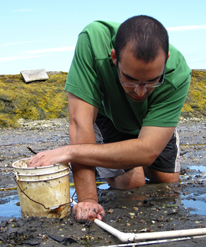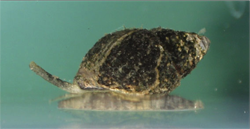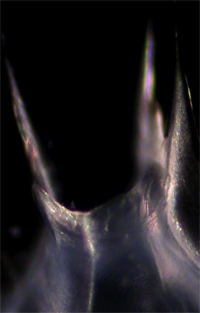WM Undergraduate Receives Prestigious NSF Graduate Research Fellowship
 Every year, the National Science Foundation awards approximately 2,000 of its most prestigious scholarships to a mix of promising first year graduate students and graduating undergraduates. The Graduate Research Fellowship Program (GRFP) provides more than $100,000 over three years in support of each student's graduate course of study. To receive this honor as an undergraduate is a very rare event. Over the past eight years, including this year, only 10 WM undergraduates have received this award and four of these were students majoring in the life sciences. In 2012, only one William and Mary student garnered this prestigious award: Daniel Schwab (WM '12).
Every year, the National Science Foundation awards approximately 2,000 of its most prestigious scholarships to a mix of promising first year graduate students and graduating undergraduates. The Graduate Research Fellowship Program (GRFP) provides more than $100,000 over three years in support of each student's graduate course of study. To receive this honor as an undergraduate is a very rare event. Over the past eight years, including this year, only 10 WM undergraduates have received this award and four of these were students majoring in the life sciences. In 2012, only one William and Mary student garnered this prestigious award: Daniel Schwab (WM '12).
 The receipt of this award capped a long and extremely productive four years of undergraduate research by Daniel, and is emblematic of the kind of success that WM students can achieve when given the resources to conduct meaningful research. As Daniel discovered, in some cases this research begins nearly from the time they first set foot on campus.
The receipt of this award capped a long and extremely productive four years of undergraduate research by Daniel, and is emblematic of the kind of success that WM students can achieve when given the resources to conduct meaningful research. As Daniel discovered, in some cases this research begins nearly from the time they first set foot on campus.

As a freshman, Daniel was given the opportunity to conduct research on the biology of an unusual group of beetles in the entomology laboratory of Dr. Norman Fashing. After spending a year studying these animals, Daniel switched gears and began working on the evolution, ecology and developmental plasticity of mudsnails in Virginia and in Maine. With generous support from the College of William and Mary's grant from the Howard Hughes Medical Institute, Daniel was able to conduct two summers of research on mudsnails in southern Maine at the Bowdoin College Coastal Studies Center.
During his research, Daniel found that maternal size strongly affects both reproductive output and the scope of predator-induced phenotypic plasticity. He also found that snails increase their defensive investment in egg capsules by increasing the length of the spines that they use to deter predation. These results have strong implications for the role of maternal investment in both the evolution of development and phenotypic plasticity.
 Following each summer of research, Daniel presented his work at the annual meeting of the Society of Integrative and Comparative Biology, first in Salt Lake City, UT and then in Charleston, SC. It was as a presenter at these meetings that Daniel solidified his interest in pursuing his graduate career in evolutionary biology. As Daniel puts it "Attending SICB gave me a great opportunity to present my research in a public setting and to receive thoughtful comments from experts on my work. It was there that I met potential graduate school advisors and their students, who helped to encourage my interests in evolutionary biology".
Following each summer of research, Daniel presented his work at the annual meeting of the Society of Integrative and Comparative Biology, first in Salt Lake City, UT and then in Charleston, SC. It was as a presenter at these meetings that Daniel solidified his interest in pursuing his graduate career in evolutionary biology. As Daniel puts it "Attending SICB gave me a great opportunity to present my research in a public setting and to receive thoughtful comments from experts on my work. It was there that I met potential graduate school advisors and their students, who helped to encourage my interests in evolutionary biology".
Daniel's story continues this fall as he matriculates into a Ph.D. program in the Biology Department at Indiana University. In a fitting turn that blends Daniel's two research experiences at WM, Daniel will be working in the lab of Dr. Armin Moczek studying the evolution of development in a clade of horned beetles.
 Skip to main content
Skip to main content
